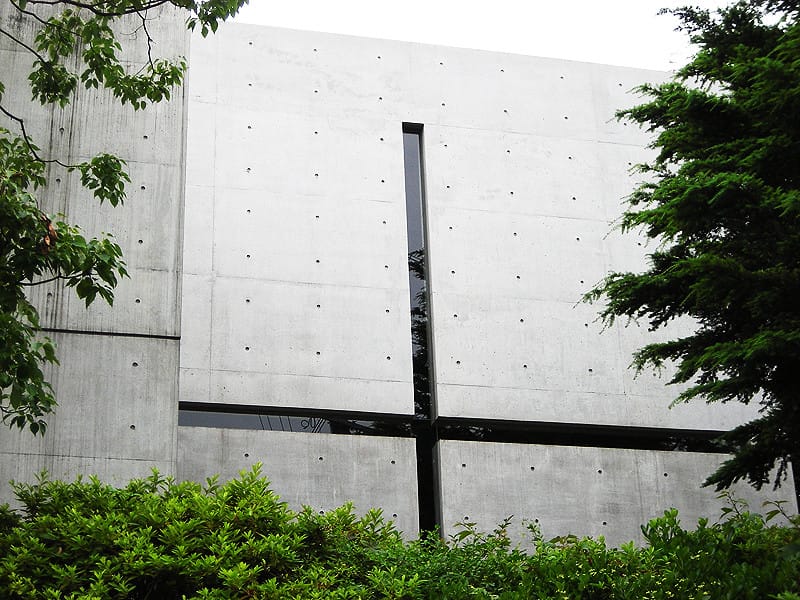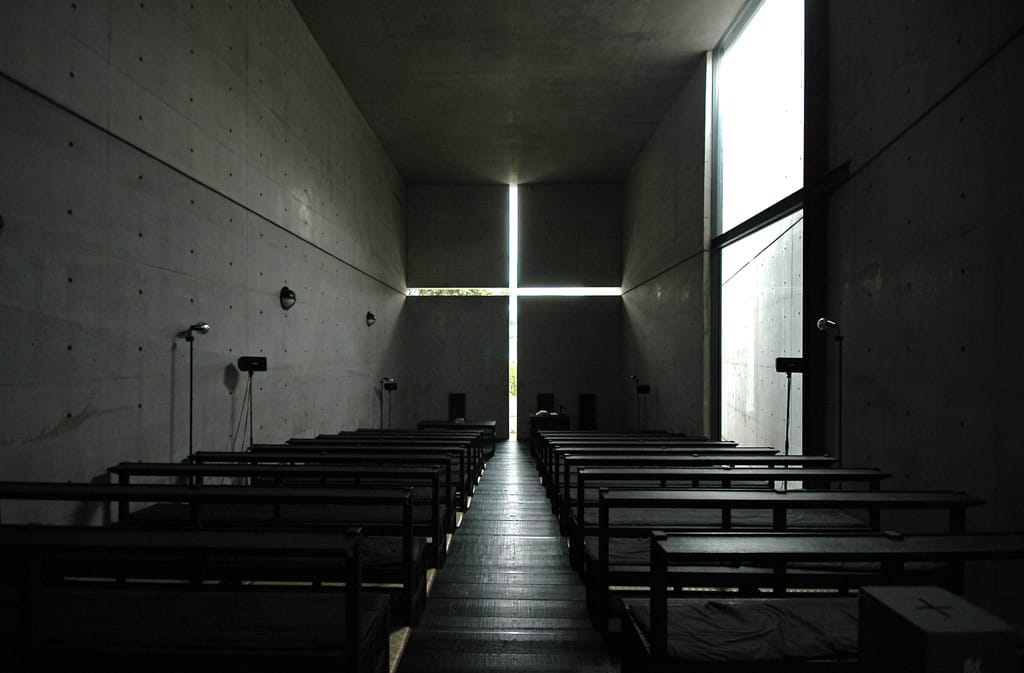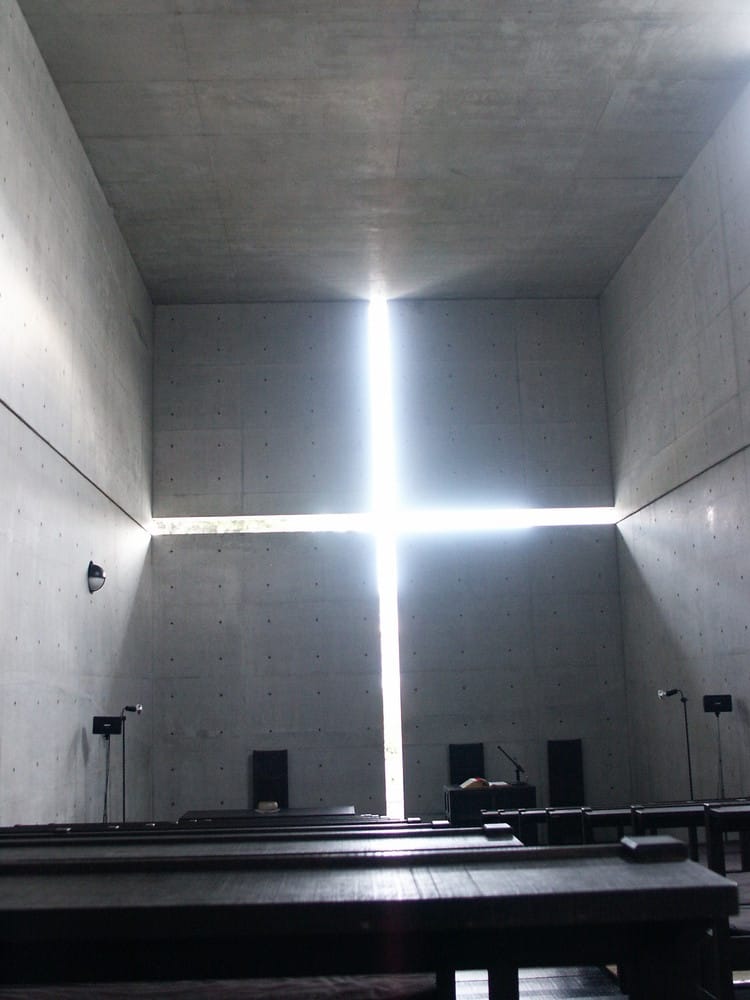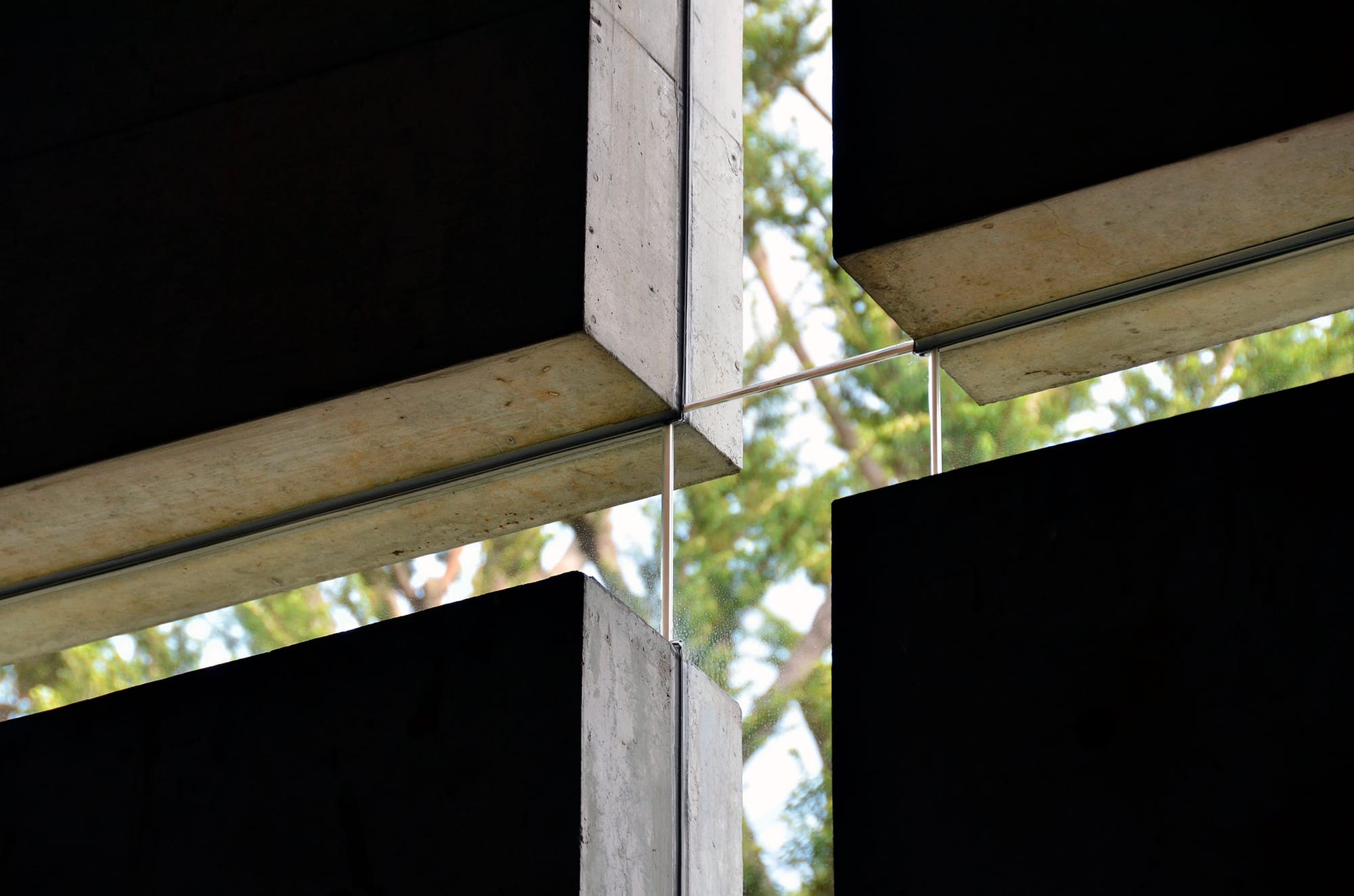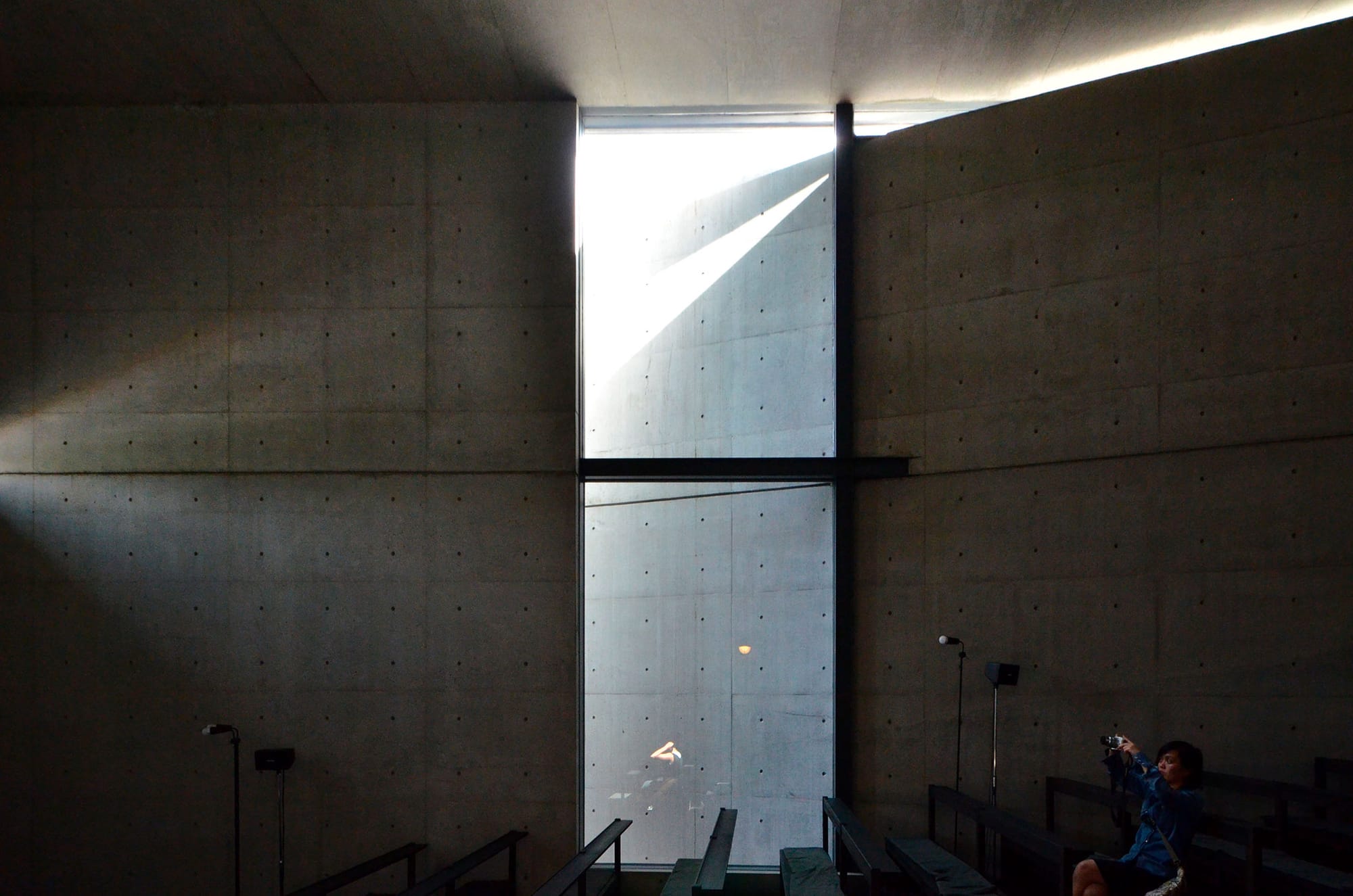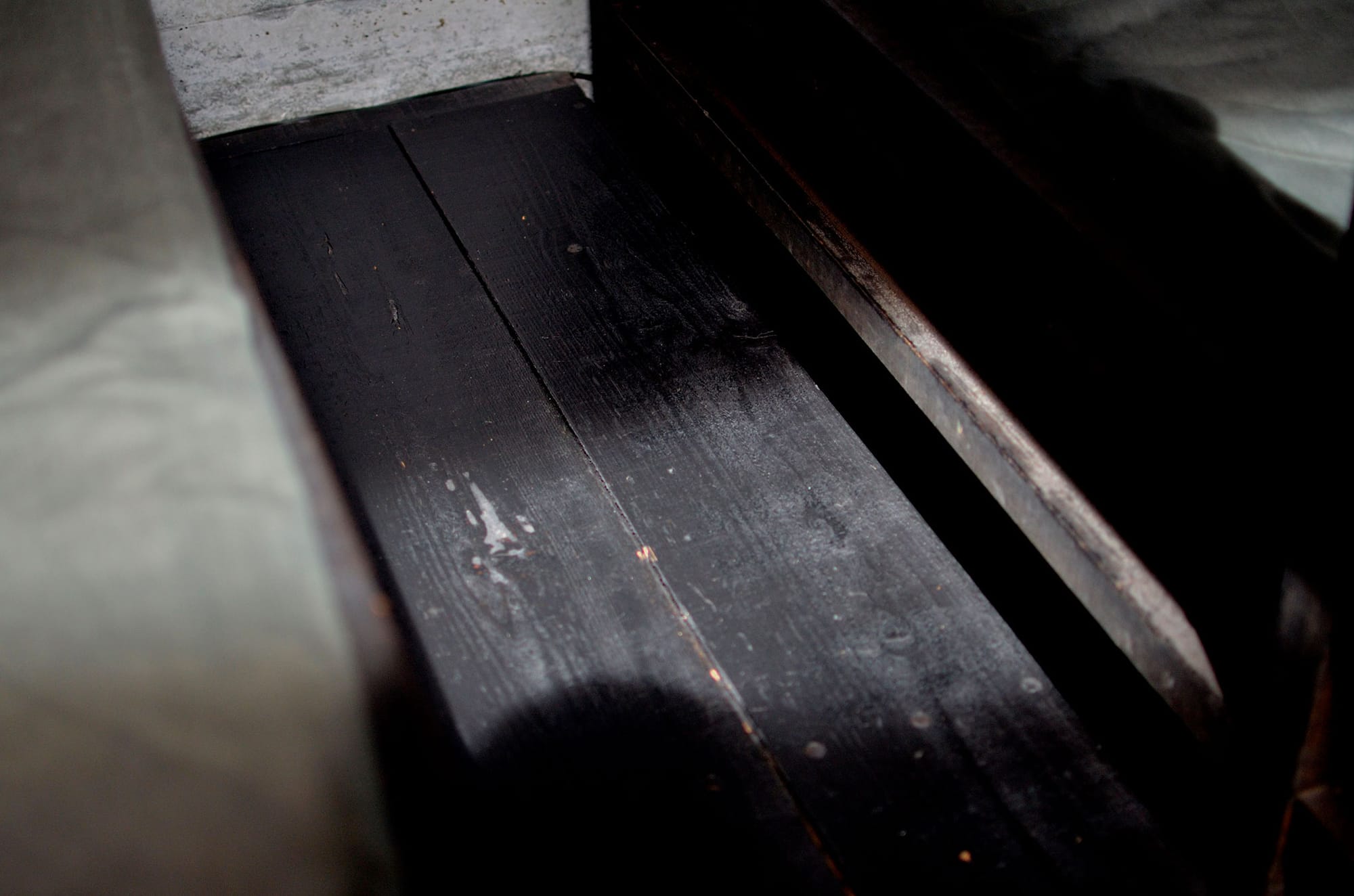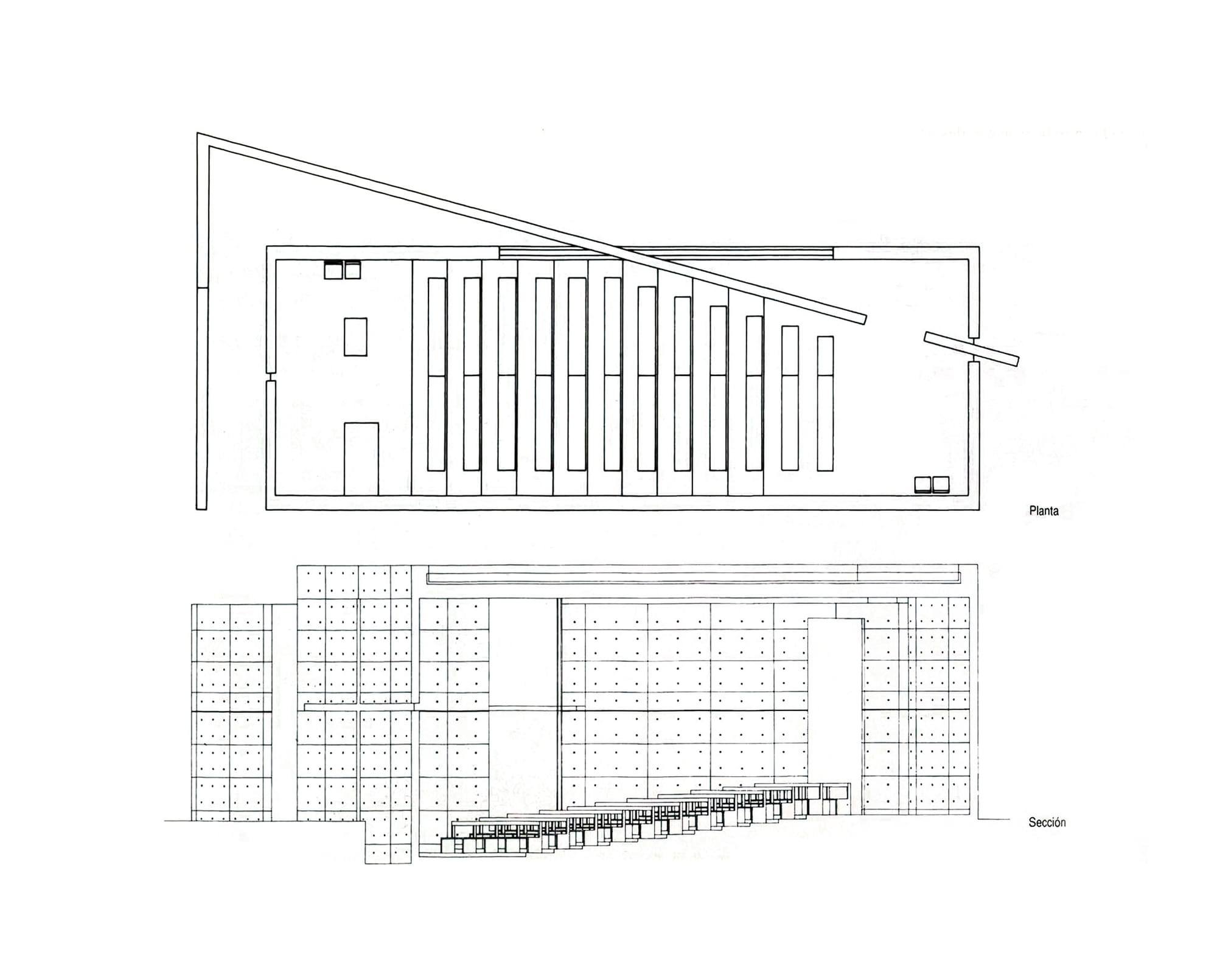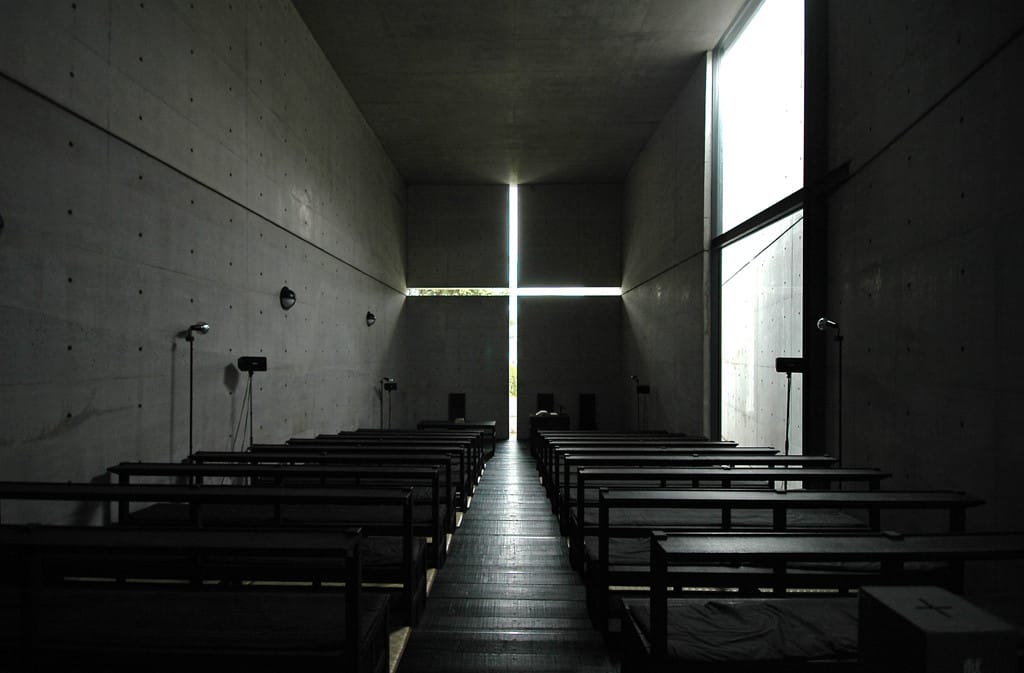
Few buildings have been more widely referenced in discussions of silence in architecture than Tadao Ando’s Church of Light in Ibaraki, Japan. Yet what makes the space truly still is not its form alone, but its restraint. The quiet logic of subtraction over addition.
Completed in 1989, the church occupies a narrow suburban plot. It is modest in size, austere in material, and stripped of ornament. Exposed concrete, a material often associated with weight or even brutality, becomes here a medium for serenity. Its texture absorbs sound; its mass displaces noise. The air inside feels denser, not oppressive, but thick with presence.
What defines the space is the cruciform cut in the east-facing wall, a gesture so simple it risks cliché. And yet in practice, the light it admits is anything but decorative. At certain hours, it sharpens into a blade, slicing through the gloom and becoming the room’s only source of movement. At others, it dissolves, leaving the space dim and monastic.
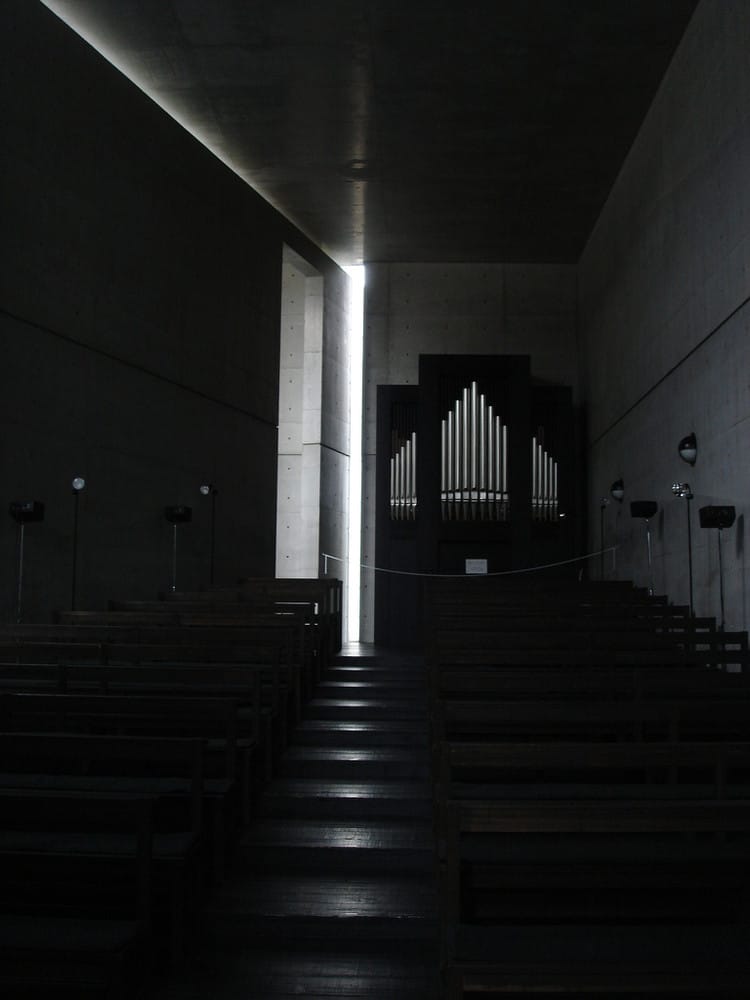
Visitors often describe a hush upon entering. A physical deceleration. There is no iconography to fix the eye, no hierarchy to dictate attention. One is left with volume, light and the subtle shifts of the day. It’s architecture as a sensory field rather than a message. Nothing instructs you to be still, but the space renders action unnecessary.
What makes the Church of Light so compelling as a contemplative space is not its religious programme, but its refusal to explain itself. It doesn’t dramatise silence; it makes room for it. The building holds a kind of disciplined emptiness, where everything present feels necessary and nothing more.
In a time when architecture is often asked to be expressive, interactive, or performative, this work reminds us that absence can also communicate. Silence in architecture is not just about the removal of noise, it is about creating the spatial conditions in which perception is heightened and attention can rest.
Ando once remarked, “I try to use light as a material, the same as concrete or glass.” In the Church of Light, light becomes the only ornament and time becomes the only narrative. Together, they produce a kind of stillness that is not imposed, but discovered, moment by moment, in space.
